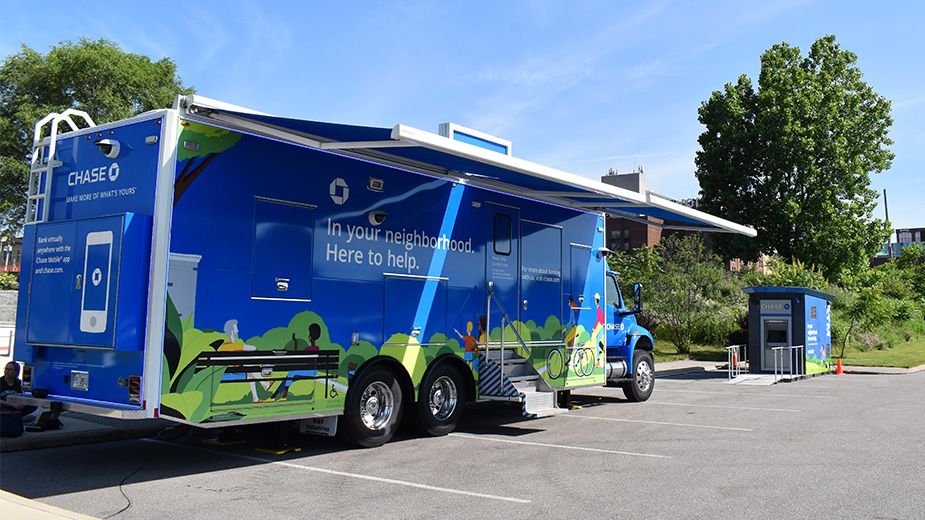As Digital Banking Grows, Branch Offices Close
YOUNGSTOWN, Ohio – More than 40 years ago, Rob Koski opened his first checking account at Lawrence Savings & Trust Co. in New Castle, Pa., before First Seneca Bank acquired the branch.
Acquisitions followed by Integra Bank, National City Bank and PNC Bank, which today operates a branch office at 3300 Center Road in Poland, the branch Koski frequents.
But not for long.
“Between my wife and I, we probably utilize the ATM at the Poland office two to three times a month,” says Koski, who lives about a mile from the bank. “We don’t use the office as much because of online banking, but that ATM gives us the ability to get cash where an online account can’t.”
Branch customers recently were notified that PNC will close the Poland branch April 26.
After it closes, the closest branch to the Koskis will be about three miles away, at 1000 Youngstown-Poland Road in Struthers.
“Fees are high using a non-PNC machine,” Koski says. “We’ll have to drive close to six miles round trip to get cash without ATM fees.”
Consolidating the branch is in response to the changes where consumers are using bank branches, says Marcey Zwiebel, director of corporate public relations for PNC.
“Increasingly, customers are turning to alternative and more convenient methods of conducting their transactions,” such as online banking and mobile banking, she says.
Today’s ATMs have the ability to perform transactions differently than in the past, Zwiebel continues. “You’re able to get different denominations of bills at an ATM today, so they can even get the type of change they need from an ATM.”
The Poland branch is the only local office that PNC is closing, but it is part of a companywide evaluation of the branch network, as it closes other bank offices across the country.
“Sixty-seven percent of our consumer customers are using nonteller channels for the majority of their transactions as of the fourth quarter of 2018,” Zwiebel says.
“Deposit transactions through the ATM and mobile channels were 55% of total deposit transactions in the fourth and third quarters of 2018. They have increased over time certainly and even throughout 2018.”
With more customers handling basic transactions online, such as depositing a check, banks see less traffic inside branches. Consumer visits to banks across the country are projected to drop 36% between 2017 and 2022, with mobile transactions rising 121% in the same period, reports The Financial Brand.
And the typical consumer will visit a bank branch just four times a year by 2022, according to research from CACI, a Virginia-based information technology company. Currently, consumers average seven visits per year to a branch and branch traffic won’t be the only metric to decrease.
CACI also predicts that banking on laptops and desktops will decrease by 63% between 2017 and 2022 as mobile devices become more popular.
Similar to PNC, Huntington National Bank announced last year that it would close 70 branches early this year because of changing trends in how customers conduct banking transactions.
Branches closing include two dozen in Ohio – including the one at 11623 Market St. in North Lima – and Michigan, along with several more in Pennsylvania, Illinois and Indiana.
“Many of these branches have an existing Huntington branch in close proximity that can support customers of the consolidating offices,” says Emily Smith, vice president of media relations for Huntington.
There are three other branches within six miles of the North Lima branch that will remain open, she notes.
“Huntington regularly reviews its distribution network to ensure our mix of branches, ATMs and online and mobile banking meets our customers’ evolving needs,” Smith says. “In making these adjustments, branches were reviewed for customer traffic patterns, transaction trends and proximity to nearby Huntington branch locations.”
After the consolidations, Huntington will operate more than 420 branches in Ohio and 270 in Michigan.
“Our priority is to help our customers’ transition to a new location and to offer more extensive digital and mobile capabilities to meet changing customer channel preferences,” Smith says. “Savings from the branch consolidation will be substantially reinvested in these increasingly used channels.”
Last June, F.N.B. Corp. announced it would close up to 20 branches of its retail-banking subsidiary, First National Bank of Pennsylvania.
By closing these branches, the bank has accelerated its branch-optimization program that’s been in place for years, officials say.
The program is designed to “increase efficiency and improve growth prospects for the bank as customer preferences for mobile and other technology-based services evolve,” the company said when it announced the closings.
Last year, The Wall Street Journal reported that from June 2016 through June 2017, more than 1,700 branches of U.S. banks closed, the largest 12-month decline on record.
Julie Stackhouse, vice president of the Federal Reserve Bank of St. Louis, cited that report in a 2018 study.
“That large drop, while surprising, is part of a trend in net branch closures that began in 2009,” Stackhouse wrote. “Since 2009, the number of commercial bank and thrift branches has shrunk nearly 10%, or just over 1% per year.”
Community banks have closed the fewest number of branches, she noted, and “new branches continue to be opened. It’s also important to note that deposits continue to grow – especially at community banks – even as the number of institutions and branches decline.”
Copyright 2024 The Business Journal, Youngstown, Ohio.


